
A couple of weeks ago, I went on a day trip with some of my students to the battlefields of WWI, in and around Ypres. Having read and taught plenty of WWI fiction in my time, I was intrigued to see the contemporary reality of the world of mud and gore depicted by those who experienced the horrors of trench warfare. Would there still be marks of the conflict on the landscape? Would I be able to recognize any of the places I had read about? Would I feel moved by what I saw, able to imagine the scenes of conflict that had once scarred this now peaceful corner of the Belgian countryside?
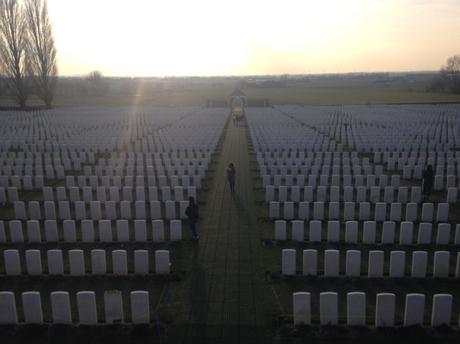
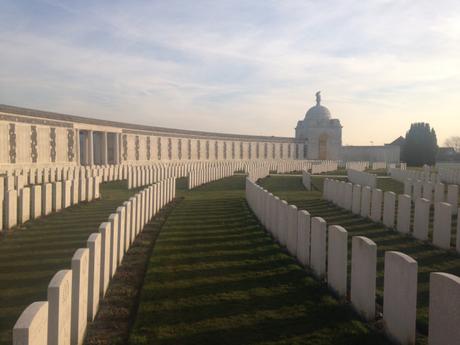
The journey to Ypres was in itself a time of reflection. As we drove to Dover to catch the ferry, our guide explained that we were following in the exact footsteps of the soldiers, who would have come to the port at Dover to catch their boats to France. Our approach to Dover was met with delighted gasps from the students, who all pressed themselves up against the windows at their first glimpse of the sea; for us, the prospect of a boat trip across the Channel was a joy, a treat, something to be celebrated. For the soldiers, the sea was a divide between the peace of England and the horror of war: a gaping chasm between a heretofore perfectly ordinary life and an almost certain death. As we clambered up the stairs from the car deck to the top floors of the ferry, the students rushing off to spend their Euros in the shop and race around the deck while us teachers retreated to a quiet corner to get our injection of caffeine and a precious moment of peace, I couldn’t help but wonder what it must have felt like to get on board a ship and know you were facing a hell from which you might never return. When we docked at Calais and started driving through the flat, monotonous countryside on our way to the Belgian border, again, I wondered what it must have felt like to be driving along these roads in the back of trucks, hearing the sound of guns growing louder and louder, watching this foreign landscape pass by, and wondering whether you would ever find yourself returning to the home you knew and loved. How extraordinary that one hundred years on, this place, that was once a churning pit of mud and blood and rubble is now fields punctuated with clusters of suburban homes, peacefully sitting atop land that was a graveyard for so many hundreds of thousands of men. It doesn’t seem right, but then, at the same time, it seems so utterly fitting. After all, this was what they were fighting for; freedom, peace, prosperity. The right for life to go on.
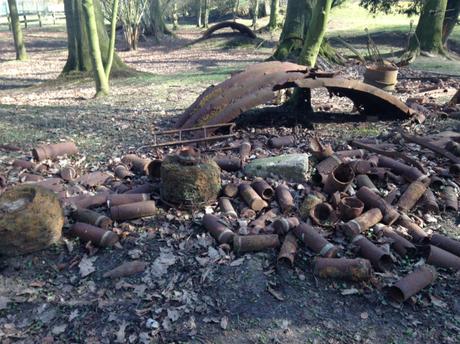
When we reached our first stop, at Hooge, we had already seen several Commonwealth cemeteries, their uniform gravestones a constant reminder of what once took place here. Many are very small, and take up part of people’s gardens or fields; others are enormous, and the scale of the loss, represented by the thousands of headstones that disappear into the horizon, is truly brought home. However, I was not prepared for what I found at Hooge. There is a large crater here, made by a bomb laid underground, and not only can you go down into the tunnels made by the bombers, but you can also walk in a stretch of trench that still remains in its original condition, duckboards and all. I am tall; 5″10, to be precise, and the walls of the trench barely made it up to my elbow. I would have had to spend all my time stooping in order to stay protected, and even on a dry day, like when we visited, the ground was still a series of sloppy, muddy puddles that the wooden boards sunk into. It was incredibly eerie to be in a trench, and I couldn’t bear to think of what had taken place where I was standing. After just a few minutes, I felt claustrophobic; what must it have been like to spend days in there? It gave us all considerable pause for thought, and showed us a reality that literature cannot hope to convey, no matter how brilliant and descriptive the prose.
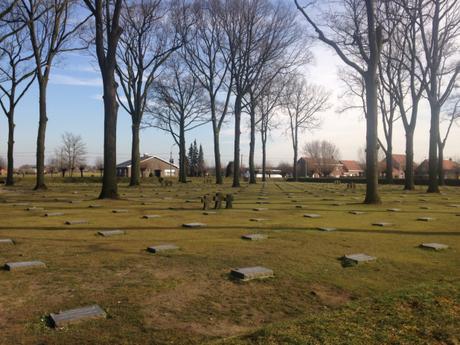
After this rather surreal experience of literally walking in the soldiers’ shoes, we went on to visit Tyne Cot cemetery, a huge Commonwealth cemetery where around 20,000 men are buried. We conducted a wreath laying ceremony here, which we all found very moving, before wandering amidst the graves. So many are for unknown men, and so many were younger than me when they died; it was really quite overwhelming to stand there and see these graves, stern and erect as soldiers, stretching on, row after row – the loss is just so difficult to comprehend until you see it like this, with each of those headstones representing a person. When you think that each of these enormous cemeteries dotted around the Ypres region just represents a fraction of those who died in the war as a whole, it really does take your breath away. I found myself feeling quite tearful as I watched the sun start to set in the distance, and thought of these men lying here for so many years, many never visited and some possibly no longer remembered, each dying far from home having faced a death I can’t even bear to think about. Worse than this, however, was the German cemetery just down the road. Understandably, the Belgians did not particularly want to give up much land to the Germans in order for them to bury their dead, and so, in a small patch of a Belgian field there is a pit where 25,000 German soldiers have all been thrown in together, their names inscribed in tiny letters on a series of plinths. The difference in the treatment of the dead says it all about what it means to win or lose a war, and the bleakness of the German cemetery made us all feel very uncomfortable as we considered how the German mothers, fathers, wives, children and so on must have felt to know that their loved ones, who had faced just the same horror as the Commonwealth soldiers, had been treated in this way. Our King asked our soldiers to fight: their Kaiser asked them to fight. They didn’t start the war, and they were just children, too. Surely they deserved more dignity in death than this?
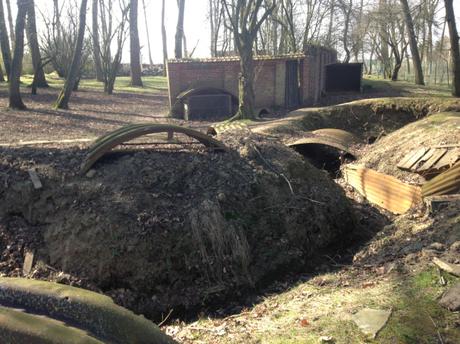
Our return journey home took us through the rebuilt streets of Ypres, which looks just like an authentic medieval town, despite having largely been reconstructed from scratch after the war. We drove through the Menin Gate, a memorial to the soldiers whose bodies were never found, that was built at the Eastern edge of Ypres, over the road on which all allied soldiers would have had to travel to get to the front. It is still closed every night for the sounding of the Last Post, and if we hadn’t have had a ferry to catch, I would have loved to have stayed to hear it. As we drove back to Calais in the darkening twilight, I was surprised by how moved I had been by the whole day. I had thought the war had been forgotten here, and that all traces of it would be gone. I’m glad that it is still possible to come and understand the colossal scale of the atrocities man committed unto others here, and I think it’s so important especially for young people to see this and reflect on what it means to incite violence and hate. I only wish we would learn from the past, though; it never ceases to make me sad that, as my history teacher always used to love telling us, history teaches us that history teaches us nothing.
